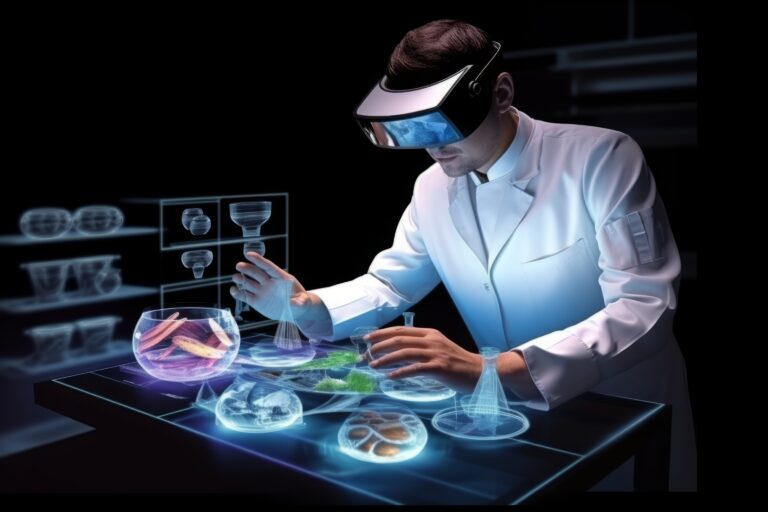How Tech is Enhancing Productivity in the Workplace
In today’s fast-paced business environment, technology plays a crucial role in boosting productivity in the workplace. From communication tools and project management software to automation and AI, tech innovations are transforming how we work. Here’s a look at the ways technology is enhancing productivity and driving efficiency in the modern workplace.
Communication and Collaboration Tools
Effective communication and collaboration are essential for productivity. Technology has introduced numerous tools that make it easier for teams to stay connected and work together efficiently.
Instant Messaging and Video Conferencing
Instant messaging and video conferencing platforms have revolutionized workplace communication.
- Real-Time Communication: Tools like Slack, Microsoft Teams, and Zoom enable real-time communication, allowing team members to collaborate instantly and share information quickly.
- Remote Work: Video conferencing tools facilitate remote work by enabling face-to-face meetings and discussions, regardless of geographical location.
- Collaboration Features: These platforms often include features like file sharing, screen sharing, and integrated project management, enhancing collaborative efforts.
Collaborative Workspaces
Cloud-based collaborative workspaces allow teams to work on documents and projects simultaneously.
- Document Sharing and Editing: multiple users to edit documents in real-time, ensuring that everyone is on the same page.
- Centralized Information: These platforms serve as centralized repositories for documents and information, making it easy for team members to access and share resources.
- Version Control: Collaborative workspaces track changes and maintain version histories, preventing confusion and ensuring accountability.
Project Management Software
Project management software helps teams plan, execute, and monitor projects more effectively.
Task Management
Task management tools streamline the assignment and tracking of tasks.
- To-Do Lists and Kanban Boards: Tools like Trello, Asana, and Monday.com use to-do lists and Kanban boards to visualize tasks, prioritize work, and track progress.
- Deadlines and Reminders: These tools allow users to set deadlines and reminders, ensuring that tasks are completed on time.
- Accountability: Task management software assigns responsibilities and tracks who is working on what, fostering accountability within the team.
Time Tracking
Time tracking software helps monitor how time is spent on various tasks and projects.
- Productivity Insights: Tools like Toggl and Harvest provide insights into how time is allocated, helping teams identify areas for improvement and optimize workflows.
- Billing and Invoicing: For businesses that bill by the hour, time tracking software simplifies the process of creating invoices and ensuring accurate billing.
- Resource Allocation: Understanding time usage helps managers allocate resources more effectively, ensuring that projects stay on track and within budget.
Automation and Artificial Intelligence
Automation and AI technologies are transforming workflows by handling repetitive tasks and providing valuable insights.
Workflow Automation
Automation tools streamline repetitive processes, freeing up time for more strategic tasks.
- Automated Workflows: Tools like Zapier and Microsoft Power Automate create automated workflows that connect different apps and services, reducing manual data entry and minimizing errors.
- Email Automation: Email marketing platforms like Mailchimp and HubSpot automate email campaigns, allowing for targeted communication without the need for constant manual intervention.
- Customer Relationship Management (CRM): CRMs like Salesforce automate sales and customer service processes, improving efficiency and ensuring that customer interactions are tracked and managed effectively.
Artificial Intelligence
AI enhances productivity by providing intelligent insights and automating complex tasks.
- Data Analysis: AI-powered tools analyze large datasets to identify trends and generate actionable insights, helping businesses make informed decisions.
- Chatbots: AI-driven chatbots handle routine customer inquiries, providing quick responses and freeing up human agents for more complex issues.
- Predictive Analytics: AI uses predictive analytics to forecast trends and outcomes, enabling proactive decision-making and strategic planning.
Remote Work Technology
The shift to remote work has been accelerated by technology, making it possible for teams to stay productive outside the traditional office environment.
Virtual Private Networks (VPNs)
VPNs provide secure access to company networks from remote locations.
- Security: VPNs encrypt internet connections, ensuring that sensitive data remains protected when accessed remotely.
- Access to Resources: VPNs allow remote employees to access company resources and applications as if they were in the office, maintaining productivity and continuity.
Remote Access Software
Remote access tools enable employees to work on their office computers from any location.
- Seamless Access: Tools like TeamViewer and AnyDesk provide remote access to desktop applications and files, ensuring that employees can continue their work without interruption.
- Collaboration: Remote access software often includes collaboration features, such as file sharing and real-time support, enhancing teamwork and productivity.
Health and Well-being Technologies
Technology also supports employee well-being, which is crucial for maintaining productivity.
Ergonomic Tools
Ergonomic tools and equipment improve comfort and reduce the risk of workplace injuries.
- Standing Desks and Ergonomic Chairs: Adjustable desks and ergonomic chairs promote better posture and reduce physical strain, enhancing comfort and productivity.
- Monitor Stands and Keyboard Trays: These accessories help create an ergonomic workstation, minimizing discomfort and boosting efficiency.
Health Monitoring
Wearable technology and health apps support employee health and well-being.
- Fitness Trackers: Devices like Fitbit and Apple Watch encourage physical activity and monitor health metrics, promoting a healthier lifestyle.
- Wellness Apps: Apps like Calm and Headspace offer meditation and relaxation exercises, helping employees manage stress and maintain mental well-being.
Conclusion Technology is a powerful enabler of productivity in the workplace. By improving communication and collaboration, streamlining project management, automating repetitive tasks, supporting remote work, and promoting health and well-being, tech innovations are transforming how we work. As businesses continue to adopt and integrate these technologies, they can expect to see significant improvements in efficiency, employee satisfaction, and overall productivity. Embracing the latest technological advancements will be key to staying competitive and thriving in the ever-evolving business landscape.






